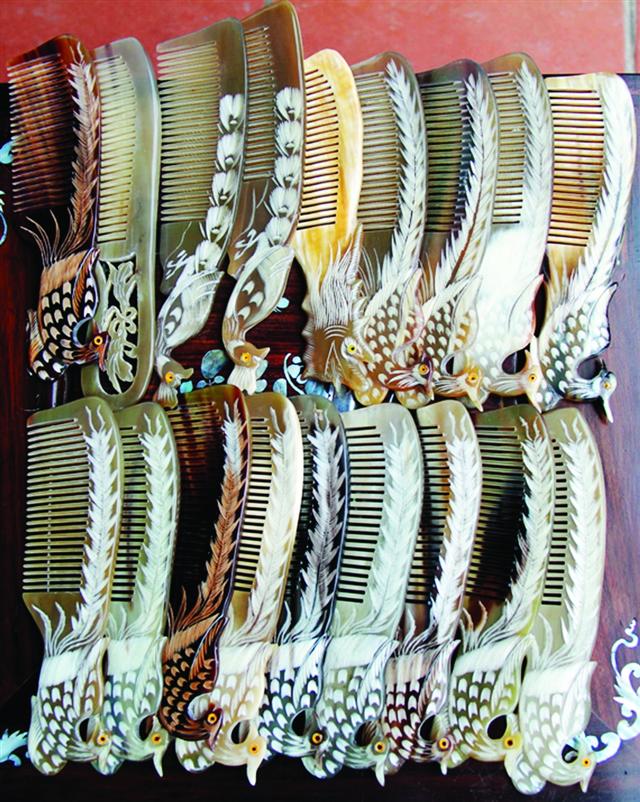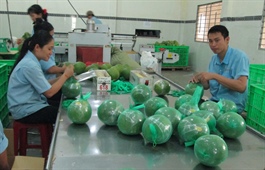Thuy Ung Village develops e-commerce app for horn products
Thuy Ung Village develops e-commerce app for horn products
Handicraft products from buffalo and cow horns made in Hanoi’s Thuy Ung Village have started penetrating e-commerce platforms, appealing to domestic consumers as well as export markets.

Craftspeople from Thuy Ung Village make horn products
|
Durability of 400 years
The Thuy Ung horn carving village, currently in the capital’s Thuong Tin District, has been famous for centuries for its combs. The high quality craft, passed from fathers to sons, has produced combs that have lasted as long as 400 years.
Earlier combs were square in shape, then improved to a curve shape like a grapefruit section. Thanks to its beautiful shape and durability, Thuy Ung’s handcrafted horn combs are popular in both domestic and foreign markets, such as Japan and the Republic of Korea, increasing incomes and improving living standards of village residents. The young generation of Thuy Ung Village also creates other products from buffalo and cow horn, such as bracelets, plates, trays, hair pins, utensils, picture frames and art works.
Thuy Ung horn products have done well on e-commerce trading floors in recent years, improving their competitiveness in domestic and foreign markets. Vietnam’s deep international economic integration not only helps Thuy Ung craft village develop sustainably, but also preserve Hanoi’s historical and traditional cultural values.
With export activities interrupted by the Covid-19 pandemic in 2020, some production households in the village focused on developing e-commerce in order to expand their domestic market. According to Vu Thanh Liem, Director of Hahanco Production and Trading Company Limited, one of the first village enterprises specializing in buffalo and cow horn to promote sales through e-commerce, domestic consumers are not familiar with the fine art horn products and horn combs in particular. Increased trade promotion through fairs, exhibition and especially e-commerce floors such as Shopee, Tiki, and Lazada, have introduced a growing number of domestic customers to these traditional handicraft products.
Liem’s business initially faced many difficulties in penetrating e-commerce floors. The enterprise decided to participate in e-commerce training courses and invest in advertising and branding in order to familiarize customers with their products and gain their trust. As a result, daily orders through e-commerce floors are up to 50-60 on average, with the most popular items being horn combs, horn-encrusted chopsticks and other horn-made accessories, Liem also shared.
E-commerce is not only helping expand the market, it also increases business competitiveness and encourages artisans to constantly come up with new products. The e-commerce presence has also contributed to the popularity of traditional products and introduced the craft village’s brand to the international market.


























